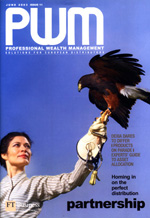Taking the credit for open architecture

It might be a hot topic for years to come, but there’s already plenty of history behind the invention and use of the open architecture concept.
When Chou En-Lai, one of China’s most respected 20th century leaders was asked about the implications of the 1789 French revolution, his considered response was: “It’s too soon to be certain.” The same could be said of the open architecture movement, which champions the idea of wealth managers selling their rivals’ products. Swiss banks began to sell external funds in the late 1970s. But the systematic selection of external strategies for wealthy individuals is credited to the late Gilbert de Botton, who founded GAM in 1983. The concept was introduced to France by Banque du Louvre in 1988 and eventually claimed by UK independent financial advisers, obliged by regulation to offer “best advice”. Both major Swiss institutions, UBS and Credit Suisse, have bitten the bullet. But the turning point in the highly territorial German market came in 2001, when Commerzbank’s research showed 50 per cent of clients were already buying their funds from someone else. The message was clear – either sell your rivals’ funds or lose your customers to them. So Frankfurt’s Deutsche Bank drew up a list of eight external “preferred providers”, in a “guided architecture” system. This has led to much controversy, with fund houses claiming selection is influenced by how much money some of those chosen were prepared to pay. Similarly, HSBC will employ the services of five external managers next year, if UK “depolarisation” regulations permit them to do so. A separate agreement has been “negotiated with each of the five companies on the basis of how much business we will get. This is a commercial arrangement,” HSBC’s head of retail banking, Tony Ashford, told PWM. How such agreements are made, how external managers are selected and who pays what to whom is still a mystery to many European banks. That’s why senior speakers from institutions including Deutsche Bank, Banco Santander and UBS will be sharing their secrets at a special distributors’ conference, organised by PWM in partnership with Fidelity and BGI, in London on October 8. The discussion in-between sessions will be just as interesting: listen out for Americans claiming they invented open architecture in the 1990s. As Chou En-Lai once quipped: “One of the delightful things about Americans is that they have absolutely no historical memory.” For more information on this conference, click on “Open Architecture” at the ftbusinessevents.com website.
Yuri Bender
Editor




